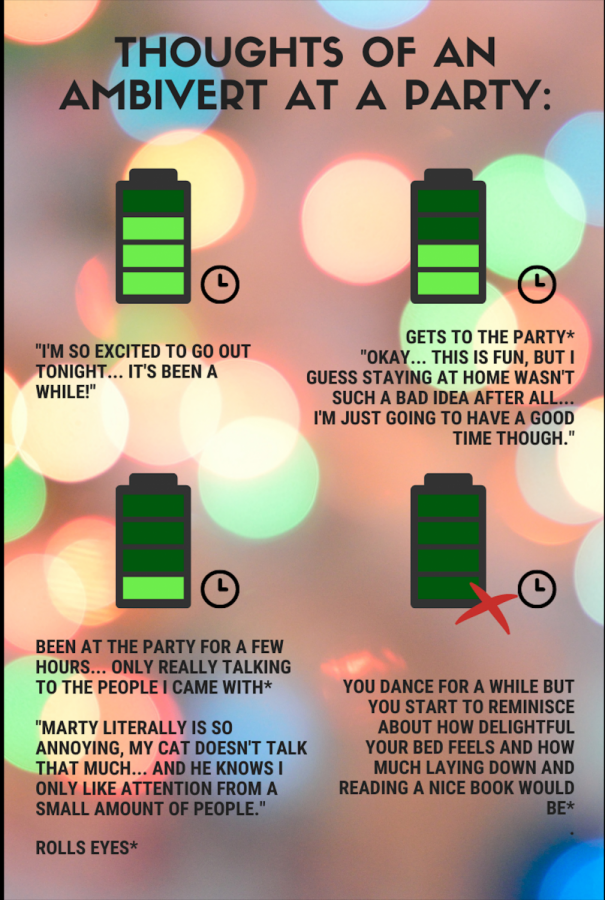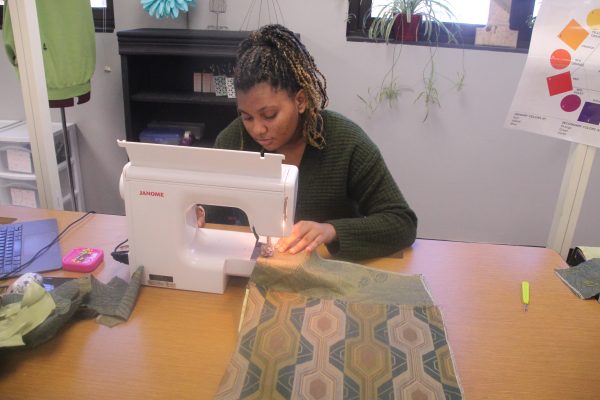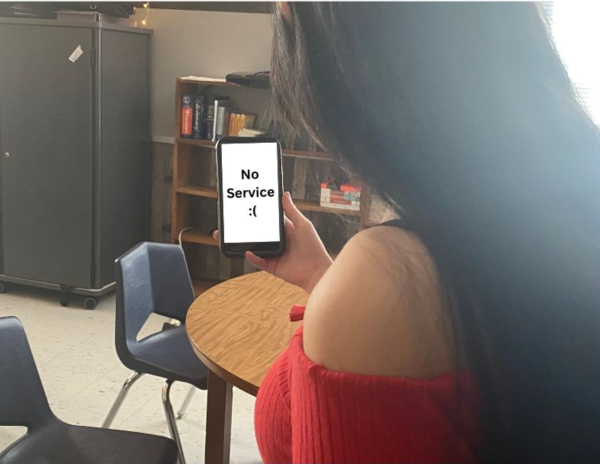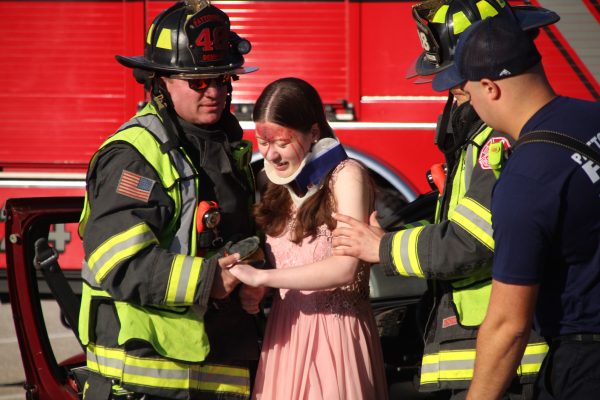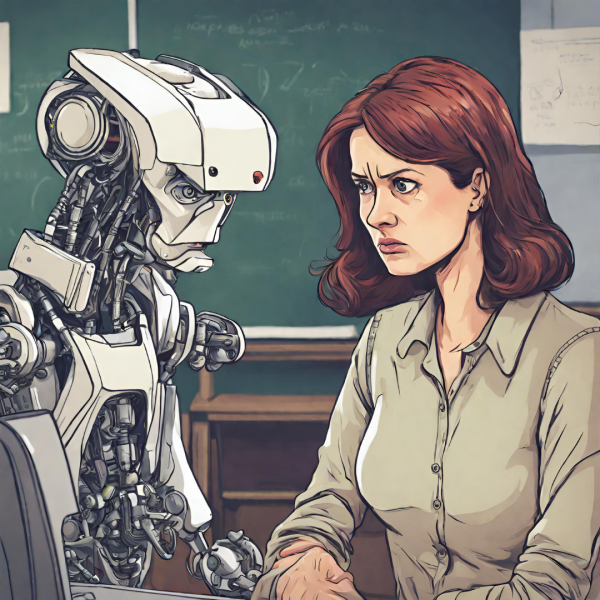Diving Into the Different Learning Preferences of Modern Day Schooling
How Can Pattonville Work Together To Be Great Beyond Our Differences?
graphic created by Jasmine Gray
Many times visual representations can help learners see different points of views regarding topics or perspectives that are unlike their own. Here’s a scenario regarding what an ambivert’s night out might look like.
When in the process of social and personal self discovery, it can become important to learn how people interact with others. In this process, some people might start to learn that they interact better individually, while others might be more effective in large groups, or maybe just within a small group of friends.
Over the course of life, self-contemplation helps us to be mentally, emotionally, and socially healthy. It has been proven that when one is finally able to find identity and personal ability, this leverages them towards faster development, thus finding paths that an individual might want to pursue.
One piece of self discovery that is effective is learning whether a person is an extrovert, introvert, or ambivert. Sometimes a person’s interactions or relationship with others can affect their ability to be successful in learning. This becomes a big question in modern society today, especially when online schooling has become an everyday tool.
A prevalent question when starting to identify as one of the three is, “What makes an individual an extrovert, introvert, or ambivert”? An extrovert is a person who is outgoing and overtly expressive, while an introvert might be shy and reticent, an ambivert being a balance between the two.
A survey was taken by four Pattonville Introduction to Journalism students. Of those four students, two are introverts, while one is an ambivert, and one is an extrovert.
When comparing the different lifestyles of the three categories, the ambivert responded, “I consider myself to be an ambivert because I am very social when it comes to people I am comfortable around and I am super obnoxious when I get close to someone but around people I am not very comfortable or familiar with them, I am super shy and anxious.”
The extroverted student reports, “I love talking to people, it has shaped me positively and given me lots of opportunities and friendships.”
The introverted individual explains, “No one is 100 percent one or the other. Being an introvert sometimes complicates things because I keep a lot of things and thoughts to myself instead of blurting them out. In a group of people I don’t know, I get very shy and anxious and don’t say much; just trying to take everything in.”
Seeing the different perspectives or personalities, one could go on to ask if all of these different types of people could learn the most efficiently in a setting that might go against their personal preferences or happenstances for daily life.
Of the four students surveyed, three find a virtual setting to weaken their personal ability to be successful in a learning environment. One student states, “The way I learn, I need to be in a visual setting because I take in things around me. I find myself observing rooms very closely if i’m bored, and if i’m home, I get even more distracted. In a school setting, the only things surrounding me are things involved with what I’m learning about.”
When considering their point of view, perhaps school is not only about socialization and a personal willingness to be more exuberant, but about visual appeal as well. A student or teacher might not want to socialize in a physical setting, but maybe being able to directly observe the material being learned while in a motivating environment is what truly makes a difference in a person’s ability to be successful.
When it comes to dealing with the learning curves of accommodating students’ particular learning interests or preferences, it is questioned upon how a teacher or educator might go about leading these different groups to success. It was also questioned if a person preferred working alone or in a group in regards to to group assignments. It was still found that half of journalism students prefer independent work, while the other half preferred working with a partner.
Many times simple human presence is presented as a personal preference when collecting data from students. Dylan Fontana explains, “I need to see and be around people. I just prefer not to talk to them.”
From another student’s perspective, personality can be influenced by environment. “It depends on the class…In some classes where I enjoy myself or have ‘fun’ I’m a bit more extroverted around those groups of people, but in other classes, such as Geometry or Biology, I’m more introverted. I think it’s because I don’t interact with the teachers much and I’m not comfortable with asking questions or asking for help around the students in the class because I don’t know them well.”
To sum things up, learning ourselves and others is never easy, nor is it something that can happen overnight. Students and teachers must not only work together to make each other successful, but get to know each other, whether that be from observing people, or simply asking questions when they are thought of. Communication, understanding, and overall listening and patience is key when making yourself and others successful around you. Some people might be extremely open, while others might be extremely closed off, some in the middle. When an individual becomes educated about themselves and in the process of learning others, they must ask themselves, ‘what can I do to make somebody else more successful around me?’
Your donation will support the student journalists of Pattonville High School. Your contribution will allow us to purchase new equipment and cover our annual website hosting costs.

